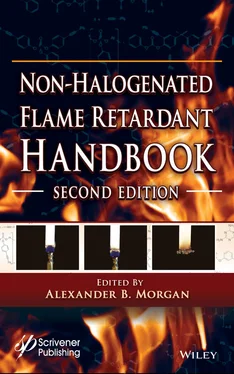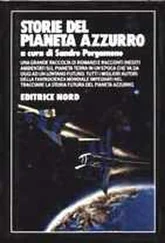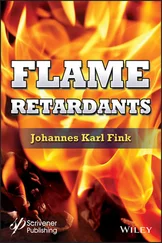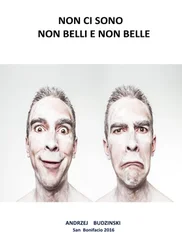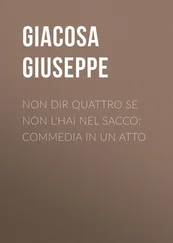527 525
528 526
529 527
530 528
531 529
532 530
533 531
534 532
535 533
536 534
537 535
538 536
539 537
540 538
541 539
542 540
543 541
544 542
545 543
546 544
547 545
548 546
549 547
550 548
551 549
552 550
553 551
554 552
555 553
556 554
557 555
558 556
559 557
560 558
561 559
562 560
563 561
564 562
565 563
566 564
567 565
568 566
569 567
570 568
571 569
572 570
573 571
574 572
575 573
576 574
577 575
578 576
579 577
580 578
581 579
582 580
583 581
584 582
585 583
586 584
587 585
588 586
589 587
590 588
591 589
592 590
Scrivener Publishing100 Cummings Center, Suite 541J Beverly, MA 01915-6106
Publishers at Scrivener Martin Scrivener ( martin@scrivenerpublishing.com) Phillip Carmical ( pcarmical@scrivenerpublishing.com)
Non-Halogenated Flame Retardant Handbook 2 ndEdition
Edited by
Alexander B. Morgan
University of Dayton Research Institute, Ohio, USA

This edition first published 2022 by John Wiley & Sons, Inc., 111 River Street, Hoboken, NJ 07030, USA and Scrivener Publishing LLC, 100 Cummings Center, Suite 541J, Beverly, MA 01915, USA
© 2022 Scrivener Publishing LLC
For more information about Scrivener publications please visit www.scrivenerpublishing.com.
1st edition (2014), 2nd edition (2022)All rights reserved. No part of this publication may be reproduced, stored in a retrieval system, or transmitted, in any form or by any means, electronic, mechanical, photocopying, recording, or otherwise, except as permitted by law. Advice on how to obtain permission to reuse material from this title is available at http://www.wiley.com/go/permissions.
Wiley Global Headquarters111 River Street, Hoboken, NJ 07030, USA
For details of our global editorial offices, customer services, and more information about Wiley products visit us at www.wiley.com.
Limit of Liability/Disclaimer of WarrantyWhile the publisher and authors have used their best efforts in preparing this work, they make no representations or warranties with respect to the accuracy or completeness of the contents of this work and specifically disclaim all warranties, including without limitation any implied warranties of merchantability or fitness for a particular purpose. No warranty may be created or extended by sales representatives, written sales materials, or promotional statements for this work. The fact that an organization, website, or product is referred to in this work as a citation and/or potential source of further information does not mean that the publisher and authors endorse the information or services the organization, website, or product may provide or recommendations it may make. This work is sold with the understanding that the publisher is not engaged in rendering professional services. The advice and strategies contained herein may not be suitable for your situation. You should consult with a specialist where appropriate. Neither the publisher nor authors shall be liable for any loss of profit or any other commercial damages, including but not limited to special, incidental, consequential, or other damages. Further, readers should be aware that websites listed in this work may have changed or disappeared between when this work was written and when it is read.
Library of Congress Cataloging-in-Publication Data
ISBN 978-1-119-75056-7
Cover image: Wikimedia
Cover design by Russell Richardson
Set in size of 11pt and Minion Pro by Manila Typesetting Company, Makati, Philippines
Printed in the USA
10 9 8 7 6 5 4 3 2 1
Preface to the 2 ndEdition of the Non-Halogenated Flame Retardant Handbook
Since the writing of the first edition in 2014, and the writing/publishing of this book in the 2020-21 timeframe, there have been some notable changes to the non-halogenated flame retardant field. Mostly, there have been an increase in regulations of flame retardant (FR) chemicals, further de-selection of chlorinated/brominated flame retardants, and some diversification of the flame retardants that exist in the “non-halogenated” category. Therefore, a need for a 2 ndedition existed. This is actually quite rapid for the FR field and for generation of a 2 ndedition of a book only 6 years after the publishing of the first, vs. the typical 10-15 years for FR book updates. FR technology tends to move at a slow pace due to flame retardant material science being a reactive field in response to regulations. Regulations take a notable amount of time to develop, be debated, and put into law, and so developments in FR chemistry in response to those regulations takes equally long. It can take even longer to take those developments out of the lab and scientific literature and then commercialize them.
The need of a book dedicated to non-halogenated flame retardant chemistry remains as strong as it did with the 1 stedition, and this book includes chapters on FRs including Phosphorus-based ( Chapter 2), Mineral-based ( Chapter 3), Intumescent-based ( Chapter 4), Nitrogen-based ( Chapter 5), Silicon-based ( Chapter 6), Boron-based ( Chapter 7), and all the other non-halogenated FR systems which are not based upon the above elements ( Chapter 10). All of these chapters existed in the 1 stedition of the book, but each of these chapters has been updated for this book, and in some cases, significantly so. Chapter 10is significantly revised, and includes bio-based FR chemicals, as well as some newer concepts. There are three new chapters in this book, including a chapter on regulations ( Chapter 1), a chapter on conformal non-halogenated flame retardant coatings ( Chapter 8), and a chapter on multi-component flame retardant systems ( Chapter 9). Overall, the revised content in the chapters from the 1 stedition, and the new chapters to this edition create an excellent contribution to flame retardant materials science. Or I hope you’ll come to that conclusion after you read the book.
As stated in the first edition, the fire threat for materials has not changed just because the regulatory environment around FR chemicals has. There is still a pressing need for flame retardant solutions for materials throughout modern society. One could argue that in some cases, with an increase in electrification of vehicles and buildings, that there may be more need, rather than less, for fire protection, and so non-halogenated solutions are part of that solution space. So with that, I believe you’ll find that this book is a single source of practical non-halogenated FR technology and information that will guide whatever research, development, testing, and evaluation (RDT&E) is needed for new fire safe solutions. I further believe that even with the many recent changes in regulations occurring as we speak, and in the years to come, that the book will still be very useful for many years beyond the 2021 publishing of this book.
As with all prefaces, I would like to thank those who helped make this book possible, especially the authors of the individual chapters who have taken time out of their busy lives to write the chapters. I also want to thank Scrivener Publishing again for their willingness to publish the 2 ndedition. Special thanks goes out to Dr. Anteneh Worku of FR Adviser LLC and Dr. Adrian Beard of Clariant GmbH for helping review chapters in this book. I certainly must thank my (now retired) colleague, Prof. (emeritus) Charles Wilkie of Marquette University, for getting me started into flame retardant book publishing many years ago. This is now the sixth book I’ve edited, and my first one on my own. Chuck taught me how to navigate this area, and for this I’m quite grateful. Finally, I want to thank my wife, Julie Ann G. Morgan, for her continual support during my career, and for teaching me enough grammar that I can finally write on my own, although she may still take issue that I actually learned those lessons.
Читать дальше
